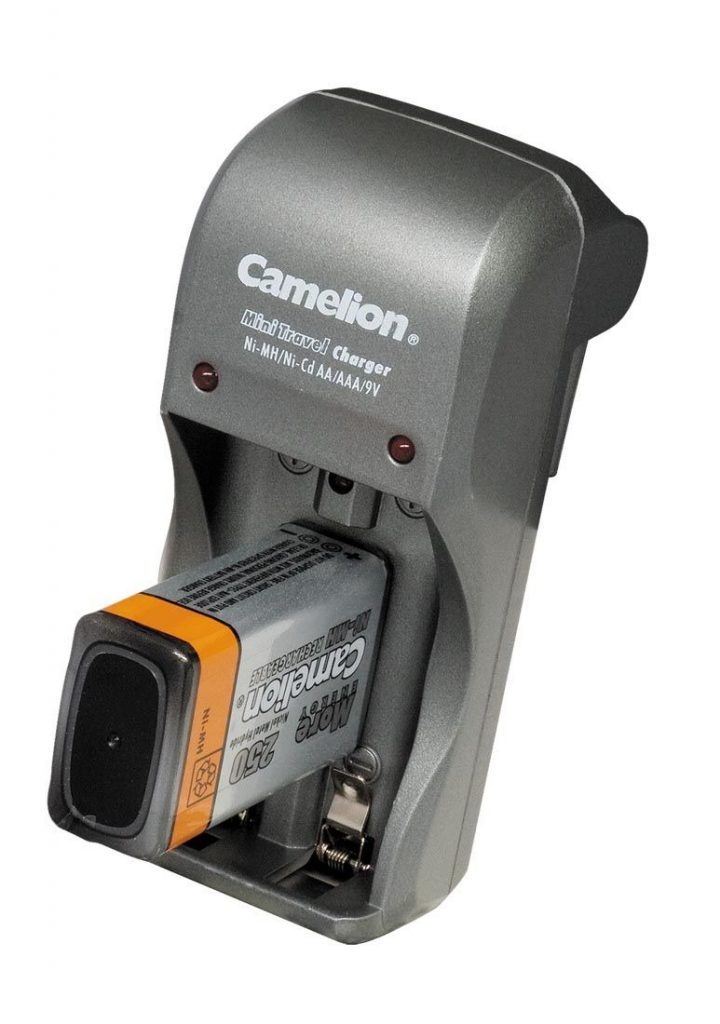Camelion BC-1001
9 volt battery charger
The 9 volt battery, better known as the 9 volt block in the battery that is usually forgotten in chargers. The focus is mainly on runners such as the AA & AAA. If your charger does have the ability to charge one, most universal chargers will be very slow to do so!
Of course the 9 volt block is not used that much. But this battery is very expensive in the alkaline version, so a rechargeable one pays for itself very quickly.
Three channel charger
The charger is suitable for one 9 volt block and two AA or AAA rechargeable batteries. Each battery is charged separately (3 channel charger).
The charging current is 25 mAh, which is almost twice as fast as the average charger. So we can safely call it a fast charger.

Specifications
» 3 own charging circuits (batteries are charged individually)
» Suitable for: NiCd & NiMH batteries
» Suitable for: 2 * AA or 4 * AAA & 1 * 9 volt
» Charging current AA 200 mAh
» Charging current AAA 200 mAh
» Charging current 9 volt 25 mAh
» Microprocessor controlled
» Power adapter. mains voltage 100 to 240 volts
What is 3 channel technology?
In this case, the three represents the three slots that the charger has that charge independently of each other. If the charger had eight slots that charge independently of each other, it would be an eight-channel charger.
By charging the batteries individually, each battery is optimally charged and you are flexible in use. It no longer matters whether you want to charge different capacities together or whether a battery is not yet completely empty. Most battery chargers charge per set of 2 batteries, if they do not have the same capacity or if 1 is not completely empty, something goes wrong. This charger has 3 separate charging channels, each channel is monitored by a microprocessor that ensures an optimally charged battery.
Example 1: a 2-channel charger
Battery 1 is an AA 2700 mah and number 2 is an AAA 1100 mah. Both batteries will now be charged at a maximum of 1100 mAh because the charger stops when battery 2 is full. The result is that battery 1 is not even half charged and is quickly empty!
Example 2:
Both batteries are AA 2700 mah, but battery 2 is half empty. Again, both batteries will be charged with a maximum of 1350 mah because the charger stops when the half-full battery is full, which is after 1350 mah.
If you use batteries of the same capacity and in one and the same device, you will not notice this, as the batteries are just as empty and are therefore just as fully charged.